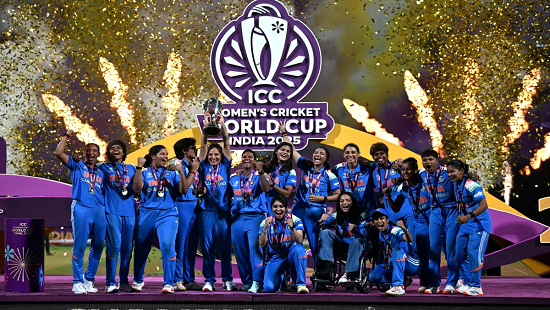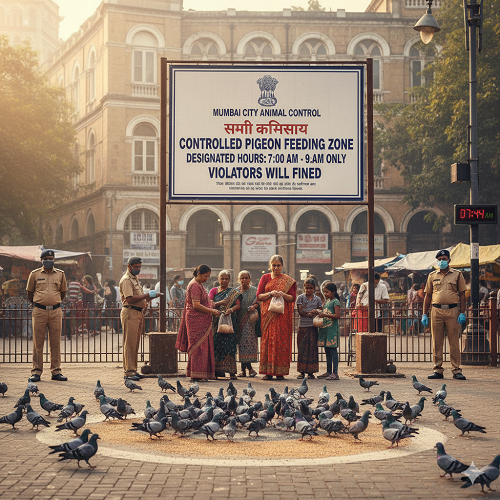
Tears, Triumph & History: Team India Stuns the World to Win Their First Women’s World Cup 2025
For a nation obsessed with cricket, few nights have felt as transformative as November 2, 2025. Under the floodlights of Navi Mumbai, the Indian women’s cricket team shattered every ceiling and stereotype, clinching their maiden ICC Women’s World Cup title with a commanding 52-run victory over South Africa. It wasn’t just a triumph of skill, it was a statement of belief, preparation, and collective resilience.
India’s journey to this point wasn’t linear. For years, heartbreaks at global tournaments were the recurring narrative. But this time, the outcome was different, not by accident, but by design. From strategic planning by coach Amol Muzumdar to the psychological transformation of key players, India’s campaign revealed a blueprint for sustained excellence.
The Turning Point: Shafali Verma’s Coming of Age
If one moment defined India’s batting brilliance, it was Shafali Verma’s 87 off 78 balls, an innings of controlled aggression and clarity. At just 21, she has matured from a teenage power-hitter into a complete player. Her ability to adapt to match situations, rotate strike, and accelerate under pressure displayed her evolution.
Shafali’s contribution wasn’t limited to the bat. When the game tightened during South Africa’s chase, she delivered with the ball, removing two crucial wickets, including that of former skipper Sune Luus. Her all-round performance earned her the Player of the Match award and underlined India’s growing depth in multi-skilled cricketers.
Her reflection after the match captured the new mindset shaping Indian women’s cricket: “I had confidence in myself, if I can stay calm, I can achieve everything. My mind was clear, and I worked on my plans.” That clarity, rare in high-pressure finals, marked India’s maturity as a team.
Deepti Sharma: The Engine Room of India’s Victory
While Shafali’s fireworks stole early headlines, Deepti Sharma’s discipline anchored both innings. Her 58 off 58 balls stabilized India’s total to a competitive 298/7, but it was her five-wicket haul that turned the final decisively in India’s favour.
Her control over line, length, and variation dismantled South Africa’s middle order, including dismissing centurion Laura Wolvaardt for 101. Deepti’s consistency through the tournament, both with bat and ball, earned her the Player of the Tournament award.
Statistically, Deepti was unmatched. Across the World Cup, she maintained an economy rate below 4.2 while averaging over 45 with the bat. Those numbers tell a deeper story, of a player who doesn’t merely contribute, but defines outcomes.
The Emotional Core: Harmanpreet Kaur and Smriti Mandhana
Leadership, often invisible, was India’s secret weapon. Harmanpreet Kaur, who has seen India stumble at the final hurdle before, radiated calm authority throughout the tournament. Her ability to back players, make instinctive bowling changes, and maintain composure under pressure paid off in the final.
When South Africa’s openers were cruising, it was Harmanpreet’s intuition that gave Shafali the ball, a decision that triggered a collapse. Later, she reflected, “My heart said I had to give her one over. That was the turning point. This team deserves this moment.”
Smriti Mandhana, India’s vice-captain, was visibly emotional as the team lifted the trophy. Her words resonated with every Indian fan: “Every World Cup we’ve gone into, there have been heartbreaks. But we always believed we had a bigger responsibility, to keep growing women’s cricket. Today, it feels like all those sleepless nights were worth it.”
Their emotions spoke of endurance, the years of quiet work, near-misses, and rebuilding. For a generation of Indian women who picked up a bat because of these two icons, this win is both closure and a new beginning.
The South African Fightback and Lessons in Grace
South Africa’s campaign ended in disappointment, but not disgrace. Laura Wolvaardt’s century was a masterclass in technique and temperament. Her 101 off 96 balls kept the chase alive before Deepti’s precision exposed the tail. As captain, Wolvaardt accepted defeat with dignity: “We’ll definitely grow from this as a group. We did so well to put those bad games behind us.”
The competitive parity between the two sides reflects the growing standard of women’s cricket globally. Unlike the one-sided finals of the past decade, this was a contest of equals, decided by discipline, not dominance.
Beyond the Trophy: What This Victory Means for India
This World Cup victory carries a significance that transcends sport. It comes at a time when women’s cricket in India is witnessing unprecedented visibility, from the Women’s Premier League to expanded grassroots programs.
According to BCCI data, participation in women’s cricket academies has increased by nearly 40% in the past two years. The impact of this win will likely multiply that figure, inspiring new players from small towns and semi-urban regions.
Financially and culturally, this win redefines Indian cricket’s gender narrative. For decades, the men’s game commanded the headlines and sponsorships. But now, with over 50 million live viewers tuning in for the final, the women’s team has proved that their stage is just as grand.
A Blueprint for the Future
The most remarkable aspect of India’s 2025 triumph is its sense of continuity. Unlike teams built around fleeting peaks, this squad blends youth and experience with foresight. Players like Richa Ghosh, Amanjot Kaur, and Shree Charani have already shown the temperament to succeed at the top level.
Coach Amol Muzumdar’s approach, emphasizing mental conditioning, fitness, and role clarity, mirrors modern high-performance teams. His message to the players before the tournament was simple: “Don’t play for redemption, play for transformation.”
The Beginning of an Era
As fireworks lit up Navi Mumbai’s skyline, Harmanpreet Kaur’s words lingered: “This is not the end, just the beginning.” Indeed, this moment may be remembered not merely as India’s first Women’s World Cup win, but as the dawn of a dynasty.
The 2025 final will go down as the night when belief became legacy, when Indian women’s cricket moved from promise to power. For millions of young girls watching across the country, it was proof that dreams, once distant, now have a blueprint.
In the end, India didn’t just lift a trophy, they lifted a nation’s hopes, and redefined what victory truly means.



